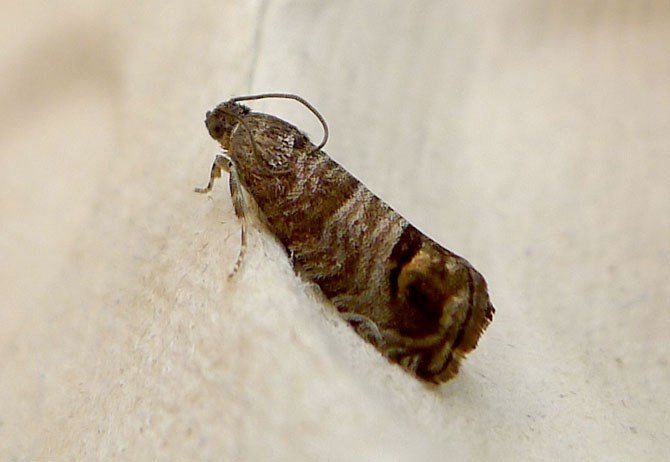
A specially designed drone for dropping sterilized moths on infested orchards is being tested in the Okanagan. The device can hold enough moths for around 40 acres, which it can cover in 8 minutes.
Image Credit: M3 Consulting Group
April 13, 2018 - 8:00 PM
KELOWNA - A new way to drop sterilized moths on Okanagan orchards could make a job that used to take an entire day take less than 45 minutes
Melissa Tesche is acting general manager of the sterile insect release program in the Okanagan-Kootenay region. She says releasing sterilized moths by aircraft was first tried in the Okanagan using Cessnas during the 1990s but the geography made it too dangerous.
Three years ago an American company, M3 Consulting Group, approached OKSIR with drone technology they said was working well on large cotton fields.
“They wanted to try on another size of moth as well, and asked ‘would you guys be willing to give us moths to test?” Tesche says. “As we watched the test we started thinking this could really work for us.”
According to the Okanagan-Kootenay Sterilized Insect Release Program website, the codling moth population has decreased by around 90 per cent since they started releasing sterilized moths into the population in 1992. Wild moths mate with the sterile moths, but produce no offspring.
“It takes very little (gamma radiation) to actually sterilize them,” Tesche says. “It’s a fine balance between giving them just enough radiation to make them sterile, but still letting them be sexy to the wild moths.”

Cydia pomonella Codling Moth.
Image Credit: wikipedia
Three years ago, equipped with a few thousand donated, sterilized codling moths from Osoyoos, the organization was able to drop a known quantity out of a specially-equpped UAV along a predetermined route. The first test was a success.
They came back the next year to see if drones might work better than the current method of using ATVs. Again, the results were promising.
“We’re satisfied that it’s a good way to drop moths, now the question is, is it a good way to drop moths for us here?”
Tesche’s hope is that the GPS-guided drones will prove faster and cheaper than ATVs and plan to spend this season working out the operational details and extending the test over a longer time.
Although Transport Canada requires an operator and spotter be present, the drones do much of the work themselves.
“Underneath the octocopter... looks like a big yogurt container with a hole on the bottom,” she says. “There’s a release device inside that meters out the moths in known quantities as it flies along. Most of the time it flies the route on autopilot, which is what makes it so great for us.”
Using open source software, the operator can also program the drone to drop a large quantity all at once or avoid areas like animal pens and property lines. Tesche says they haven’t had anyone deny them access to their orchards yet, and hope to continue testing the entire 22-week codling moth season.
The UAV currently being used can hold enough moths for about 40 acres, and can cover that in less than ten minutes. The average ATV operator covers an average of 150 acres per day.
An ATV costs between $10,000 and $15,000, whereas the drone being used, including guidance system, batteries and release device, comes in under $14,000.
“It’s got a lot of potential,” Tesche says. "It could really change things."
To contact a reporter for this story, email Adam Proskiw or call 250-718-0428 or email the editor. You can also submit photos, videos or news tips to the newsroom and be entered to win a monthly prize draw.
We welcome your comments and opinions on our stories but play nice. We won't censor or delete comments unless they contain off-topic statements or links, unnecessary vulgarity, false facts, spam or obviously fake profiles. If you have any concerns about what you see in comments, email the editor in the link above.
News from © iNFOnews, 2018